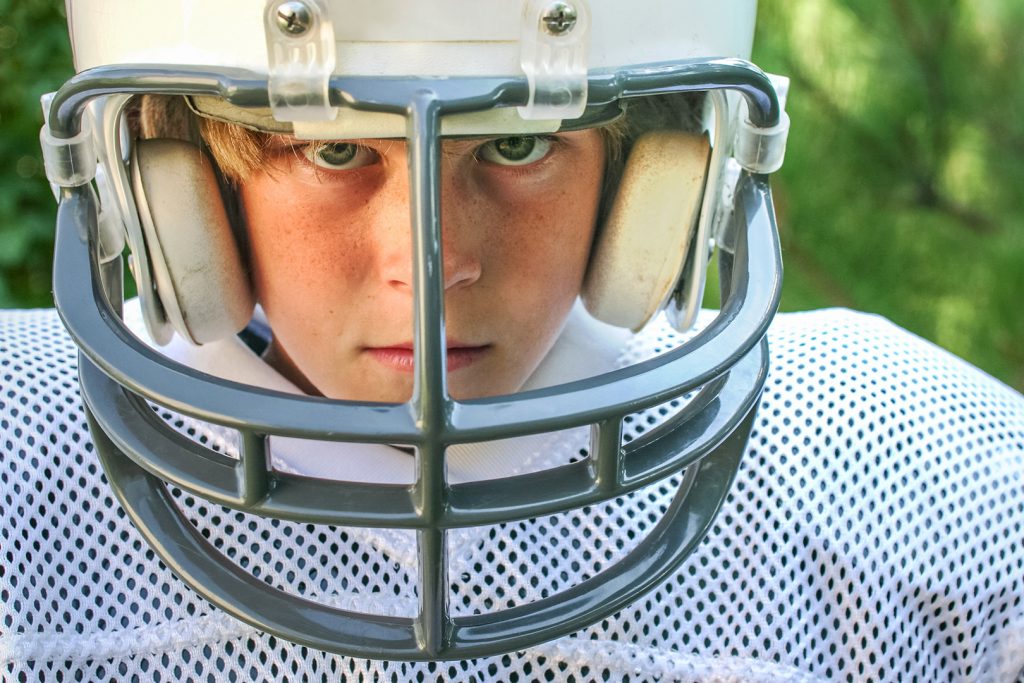
It’s only natural that parents want to make their kids happy, but it’s even more important that parents keep their kids safe. Sometimes those two things just don’t align; what makes our kids happy may cause them harm.
That struggle is exactly what many parents are facing after a recent study has shown that just one season of playing football is changing the brains of young boys (and girls) playing one of the most popular sports in schools and communities today. Parents of kids who play football are now questioning if they need to pull their kids out of the sport they love because of the possible dangers involved from blows to the head that occur while playing football.
Recent Advances in CTE
Chronic Traumatic Encephalopathy (CTE) has been in the news quite a bit the last few years. We have learned how this condition has affected adult males who played football for sometimes as long as two to three decades. Now scientific evidence has come to light that brain changes are occurring in very young football players, and those changes may be irreversible.
According to an article posted on the Concussion Legacy Foundation’s website but published by the Boston University CTE Center, Chronic Traumatic Encephalopathy is a degenerative brain disease found in athletes, military veterans, and others with a history of repetitive brain trauma (blows to the head, mainly). Previous studies have found that with CTE, a protein forms clumps that slowly spread throughout the brain, killing healthy brain cells, and while this condition has been seen in people as young as 17, the symptoms don’t typically appear for years after the trauma to the head.
CTE symptoms include aggression, depression, impulse control problems, and paranoia; as the condition worsens, sufferers may have problems with thinking and memory; confusion; impaired judgment; and eventually, dementia.
New Findings About Brain Injury in Youth
New findings suggest that brain changes may appear much sooner than originally believed. Preliminary findings of research conducted by the Radiological Society of North America have indicated that repeated blows to the head could lead to changes in the shape of the corpus callosum, which is a broad band of nerve fibers that joins the two hemispheres of the brain. The band of nerves is critical to integrating cognitive, motor, and sensory functions between the two hemispheres of the brain during the time of brain development in young people.
In the study conducted by the Radiological Society of North America, researchers used special MRI methods to examine nerve bundles in the brains of 26 young male football players, with an average age of 12 both before and after one season of football. Twenty-six more young males who didn’t play football were used as a control group and got MRI scans at the same time as the football players.
The study found that in the youths who played football, nerve fibers in their corpus callosum changed over the season, says lead study author Jeongchul Kim, a research associate in the Radiology Informatics and Imaging Laboratory at Wake Forest School of Medicine in Winston-Salem.
The changes were noted based on two different imaging approaches: One analyzed the shape of the nerve fibers and the other focused on the integrity of the nerves. The study showed that some nerve bundles grew longer and other bundles became shorter, or contracted, after the players’ initial MRI scans at the beginning of the season. Kim says they saw no changes in the integrity of the bundles. While it’s much too early to know exactly what these changes mean, there were changes in the brains of young football players, and that alone is something that is concerning to parents and medical professionals.
Football: To Play or Not to Play?
While these results have not yet been published in a peer-reviewed journal, the findings are the result of a years-long collaborative study with medical professionals from the University of Texas Southwestern Medical Center, Wake Forest University, and Children’s National Health System in the District of Columbia.
Christopher Whitlow, a radiologist and a co-author of the study, says he “cannot say what these recent findings suggest and doesn’t know yet what to tell parents about how safe their child will be on a football field.”
For now, the researchers say there are still a lot of unanswered questions, but the findings are significant and may be impactful on those families trying to decide whether or not football is the right sport for their children.















